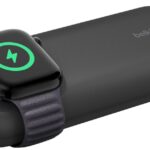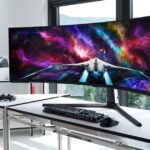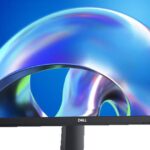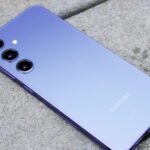Windows manufacturers have been hungering for a chipset that can keep up with Apple’s very fast and efficient M3 architecture. Enter Qualcomm with its Snapdragon X and Intel with iLunar Lake. Each aims at providing better battery life with good performance, as well as adding faster on-device AI speeds to support Microsoft’s Copilot+ PC initiative.
The XPS 13 9345 is among the first Qualcomm laptops and the Zenbook S 14 is the first Lunar Lake laptop that we’ve reviewed. This makes it an important battle to see which platform can make it to our list of the best laptops.
Specs and configurations
| Asus Zenbook S 14 (UX5406SA) | Dell XPS 13 9345 (Qualcomm) | |
| Dimensions | 12.22 x 8.45 x 0.47-0.51 inches | 11.62 inches x 7.84 inches x 0.60 inches |
| Weight | 2.65 pounds | 2.6 pounds |
| CPU | Intel Core Ultra 7 258V | Qualcomm Snapdragon X Elite X1E-80-100 |
| CPU | Intel Arc 140V | Adreno |
| RAM | 16GB LPDDR5X RAM 32GB LPDDR5X RAM |
16GB 32GB 64GB |
| Display | 14.0-inch 2.8K (2880 x 1800) OLED, 120Hz | 13.4-inch FHD+ (1920 x 1200) IPS non-touch, 120Hz 13.4-inch QHD+ (2560 x 1600) IPS touch, 120Hz 13.4-inch 2.8K (2880 x 1800) OLED touch, 60Hz |
| Storage | 1TB M.2 NVMe SSD | 512GB SSD 1TB SSD 2TB SSD |
| Ports | 2 x USB-C with Thunderbolt 4 1 x USB-A 3.2 Gen 2 1 x HDMI 2.1 1 x 3.5mm headphone jack |
2 x USB4 |
| Touch | Yes | Optional |
| Wireless | Wi-Fi 7 Bluetooth 5.4 |
Wi-Fi 7 Bluetooth 5.4 |
| Webcam | 1080p with infrared camera for Windows 11 Hello | 1080p with infrared camera for Windows Hello |
| Battery | 72 watt-hour | 55 watt-hours |
| Operating system | Windows 11 | Windows 11 on Arm |
| Price | $1,499+ | $1,199+ |
| Rating | 4 out of 5 stars | 3.5 out of 5 stars |
There’s only one configuration available so far with the Zenbook S 14. Not coincidentally, it was our review unit that costs $1,500 with an Intel Core Ultra 7 258V chipset, 32GB of RAM, a 1TB SSD, and a 14-inch 2.8K OLED display.
The XPS 13 9345 starts at $1,200 for a Qualcomm Snapdragon X Elite chipset, 16GB of RAM, a 512GB SSD, and a 13.4-inch FHD+ IPS display. Upgrading that model to 32GB and 1TB results in a $1,500 price, similar to the Zenbook. With a 3K OLED display, the XPS 13 9345 costs $1,860.
You can get the XPS 13 9345 for less, but when configured the same as the Zenbook S 14, the XPS 13 is more expensive.
Design

The XPS 13 has perhaps the most modern designs among laptops today, with a streamlined, all-aluminum chassis and several futuristic touches inside. The thing is, the zero-lattice keyboard, hidden haptic touchpad, and row of touch LED function keys are controversial and don’t really add much to the laptop’s functionality. The Zenbook S 14 has a more standard design, although it utilizes a geometric pattern on the lid and an unusual texture to make its own aesthetic statement.
Both laptops are solidly built. Both also have smooth hinges that allow opening the lid with one hand. In this respect, these are closely matched laptops.
Now, we get into those controversial XPS 13 features. The zero-lattice keyboard has very large keycaps, but zero key spacing, and even though its switches are nice and snappy, the keyboard takes some getting used to. The Zenbook’s keyboard is a more typical island keyboard, but with a better layout and equally good switches. The XPS 13’s haptic touchpad works well, but it’s hidden on the glass palm rest, so it’s easy to lose track and swipe the palm rest. The Zenbook’s mechanical touchpad is a little large, but it has a more typical feel. And the XPS 13’s touch LED function keys offer no real value.
Connectivity is another win for the Zenbook S 14. It has a solid assembly of Thunderbolt 4 and legacy ports. And, it has a 3.5mm audio jack, which the XPS 13 lacks. Both have the most up-to-date wireless connectivity.
Both laptops have 1080p webcams with infrared cameras for Windows 11 facial recognition. The XPS 13 also has a fingerprint reader embedded in the keyboard. Both have fast Neural Processing Units (NPUs) that support Microsoft’s Copilot+ PC initiative, but for now, there’s not a lot of AI functionality to show off the NPUs’ performance.
Performance

This is a battle between two new chips aimed in large part at producing Windows laptops that can compete with MacBooks in terms of efficiency. But performance matters as well. Qualcomm’s Snapdragon X Elite chipset with 12 cores is very fast, although it does run on Windows on Arm, so some apps will run slower via emulation. Intel’s Lunar Lake chipset, also know as Core Ultra Series 2, isn’t quite the same kind of standout. We reviewed the Zenbook S 14 with the Core Ultra 7 258V, a 17-watt, 8-core, 8-thread chipset.
In our benchmarks, the XPS 13 was significantly faster across the board. That includes its Adreno GPU that’s a lot faster than the Zenbook’s Intel Arc 140V graphics.
| Geekbench 6 (single/multi) |
Cinebench R24 (single/multi/battery) |
3DMark Wild Life Extreme |
|
| Asus Zenbook S 14 (Core Ultra 7 258V / Intel Arc 140V) |
2,738 / 10,734 | 112 / 452 | 3,240 |
| Dell XPS 13 9345 (Snapdragon X Elite X1E-80-100 / Adreno) |
2,797 / 14,526 | 123 / 928 | 6,397 |
Display

We reviewed the XPS 13 with one of three displays, an FHD+ (1920 x 1200) IPS display running at 120Hz. There are also QHD+ IPS and 2.8K OLED options. The Zenbook S 14 has one display, a 2.8K (2880 x 1800) OLED display running at 120Hz.
According to our colorimeters, the Zenbook’s OLED panel has the usual wide colors and near-perfect blacks, although our review unit’s color accuracy was way off. The XPS 13’s IPS display was very bright with great contrast for an IPS display.
Ultimately, both laptops have great displays, and our XPS 13 review unit offers a good choice if battery life is your primary concern.
| Asus Zenbook S 14 (OLED) |
Dell XPS 13 9345 (IPS) |
|
| Brightness (nits) |
313 | 536 |
| AdobeRGB gamut | 95% | 77% |
| sRGB gamut | 100% | 99% |
| DCI-P3 gamut | 100% | 77% |
| Accuracy (DeltaE, lower is better) |
4.92 | 1.08 |
| Contrast | 28,310:1 | 1,940:1 |
Portability

The XPS 13 is built around a 13.4-inch display and so is smaller than the Zenbook S14 with its 14-inch display. But the Zenbook is thinner and around the same weight. So, it’s hard to say one laptop is more portable than the other.
But battery life is key here, given that efficiency is a focus of both new chipsets. The Zenbook gets considerably better battery life, although its battery is a lot bigger, and that’s with a more power-hungry OLED display. The thing is, the XPS 13 shows similar efficiency to most Qualcomm laptops we’ve reviewed — it gets the best battery life when looping video, but that drops off with web browsing and when a demanding test is running Cinebench R24. The Zenbook’s battery life was more consistently good.
Both are long-lasting machines, but the Zenbook lasts longer when it’s doing real work.
| Web | Video | Cinebench R24 |
|
| Asus Zenbook S 14 (Core Ultra 7 258V / Intel Arc 140V) |
16 hours, 47 minutes | 18 hours, 35 minutes | 3 hour, 33 minutes |
| Dell XPS 13 9345 (Snapdragon X Elite X1E-80-100) |
12 hours, 29 minutes | 22 hours, 9 minutes | 1 hour, 37 minutes |
The Zenbook S 14 shows off Lunar Lake’s efficiency
The XPS 13 9345 is the best and worst of that laptop line’s design, with several controversial features that fail to offer much advantage. It’s well-built and fast, and it gets pretty good battery life. But its unusual design holds it back.
The Zenbook S 14 has a more traditional design that’s still very well-built and attractive, and it gets better battery life. Its performance isn’t as fast, however. Overall, though, the Zenbook is a lot easier to recommend, especially considering its lower price.
Read the full article here














